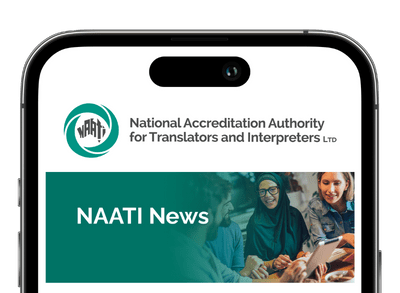TIS National and Monash University working together to provide inter-professional education for interpreting and medical students. Inter-professional education involves structured and simulated interaction that enables tomorrow’s interpreters and doctors to learn how to work with each other.
The principle of inter-professional education (IPE) is that two or more groups of learners interact with each other in a regulated learning environment and enact simulated interactions similar to those that they are likely to encounter in the workplace. IPE has been around for more than 30 years in the health sciences, but it is now only in the last 10 years that it has started to be used in the training of interpreters. Students from Monash University’s Master in Translation & Interpreting Studies program and from the Bachelor of Medical Science have been working together in IPE sessions twice yearly since 2016.
Students from both disciplines are broken up into small groups of two interpreting students and 2-3 medical students. The sessions involve the enactment of doctor-patient interactions in which medical students take on the role of a doctor, and interpreting students take on the role of either a LOTE-speaking patient or interpreter. Interpreting students allocated the role of patient are given general information about their medical history and current symptoms ahead of the IPE session. The doctor and the interpreter are given only general information that they will be working with a patient with cardiovascular, gynaecological, or chronic pain problems. The sessions involve interpreters practising how to introduce themselves and their role and to request a briefing. The consultation is interpreted in consecutive mode and, in some sessions, written information brought to the consultation in LOTE by the patient is sight translated into English by the interpreter.
Each simulated consultation lasts approximately 40 minutes and is followed by a 10-minute Q&A session amongst the students of each group. All together there are two simulated consultations, and all students convene as a group for the Q&A where they are invited to share experiences, ask questions and reflect on their own performance, and how they can more optimally work with the professional from the other discipline. Each IPE session lasts 3 hours in total.
In September 2019 and again in March 2021, Monash University worked with TIS National to add a further feature to the IPE sessions, replicating the situation of many interpreter-mediated doctor-patient interactions which are facilitated by telephone or video. This collaboration resulted from TIS National’s commitment to furthering the learning opportunities of trainee interpreters and to their commitment to contribute to other professional groups learning how to work with interpreters.
The cooperation of TIS National involved the provision of TIS National telephone interpreters taking on the role of interpreter in one of the two interpreter-mediated consultations in the IPE sessions. In September 2019, this involved the collaboration of 5 Mandarin, 2 Japanese, 1 French and 1 Spanish interpreter, and in March this involved the collaboration of 7 Mandarin, 2 Japanese and 1 Italian interpreter. Monash interpreting and medical staff liaised with all TIS National interpreters a week before the IPE session, and debriefed with them a week afterwards to provide planning and also to elicit feedback from them. Feedback from TIS National interpreters about the pedagogical aims and the simulated structure of the consultations was overwhelmingly positive. Similarly, both interpreting and medical students appreciated working with professional interpreters. Having the chance to debrief in informal Q&A sessions about their work, and asking them for advice and recommendations how doctors and interpreters can best work with each other.
As stated, IPE is a teaching and learning activity that is highly applicable to the training needs of tomorrow’s interpreters who will be working with doctors and other healthcare professionals, social workers, police, lawyers and court officials, businesspeople, teachers, tourism operators and many others. Further, it is an activity that enables future professionals from other disciplines to learn how to work with interpreters.
IPE seeks for trainees from both disciplines to have the following outcomes:
- reaction – for learners to have a positive view on the learning experience
- modification attitudes/perceptions (changes in reciprocal attitudes or perceptions between participant groups)
- acquisition of knowledge/skills (gains of knowledge and skills linked to interprofessional collaboration)
- behavioural change (individuals’ transfer of interprofessional learning to their practice setting and their changed professional practice)
Jim Hlavac and Claire Harrison from Monash University have been tracking both cohorts of students’ reported learning outcomes from the IPE sessions and have published findings from an IPE-focused research project in a leading Translation & Interpreting Studies journal: Hlavac, J., & Harrison, C. (2021). Interpreter-mediated doctor-patient interactions: interprofessional education in the training of future interpreters and doctors. Perspectives, 29(4):572-590.
The Master of Interpreting and Translation Studies program has been conducting IPE sessions with students from nursing and social work as well as medicine.
Monash University Translation and Interpreting Studies Program and Department of General Practice thank TIS National for their support and co-operation in providing TIS National interpreters for IPE sessions.

By Jim Hlavac (Translation and Interpreting Studies, Monash University) & Claire Harrison (Dept. General Practice, Monash University)

